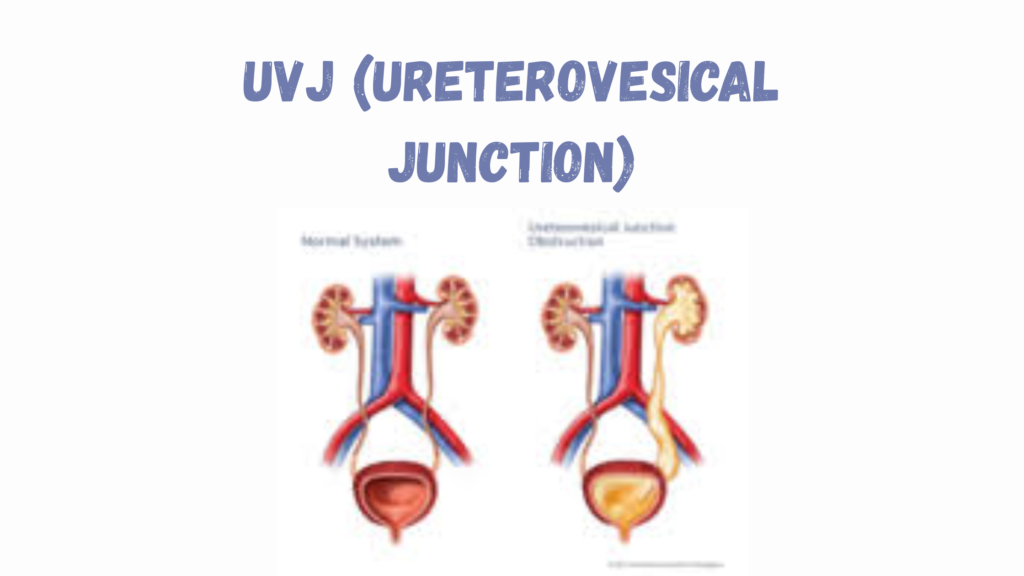UVJ (Ureterovesical Junction)
The ureterovesical junction (UVJ) is the point where the ureter enters the bladder. It is a critical anatomical site because it regulates urine flow from the ureters into the bladder and prevents backflow (reflux) during bladder filling and voiding.
🧬 Normal Function of the UVJ
- Acts as a one-way valve: When the bladder fills or contracts, the UVJ closes to prevent urine from flowing backward into the ureters and kidneys.
- Ensures efficient emptying of urine from the kidneys to the bladder.
🚨 Disorders of the UVJ
1. UVJ Obstruction
A blockage at the junction where the ureter meets the bladder.
Causes:
- Congenital narrowing (common in infants)
- Scar tissue from infection, surgery, or trauma
- Ureterocele (a ballooning of the distal ureter into the bladder)
- Stones lodged at the UVJ
- Tumors near or involving the UVJ
Symptoms:
- Flank pain or abdominal pain
- Recurrent UTIs
- Hematuria (blood in urine)
- Hydronephrosis
- Decreased kidney function
Diagnosis:
- Ultrasound (shows hydronephrosis or ureteral dilation)
- CT urogram or MRI urogram
- Nuclear medicine scan (e.g., MAG3) to assess function and drainage
- Cystoscopy if needed
Treatment:
- Surgical reimplantation of the ureter (ureteral reimplantation)
- Endoscopic incision or balloon dilation
- Ureteral stenting
2. Vesicoureteral Reflux (VUR)
A failure of the UVJ valve mechanism, allowing urine to flow backward from the bladder into the ureter and possibly up to the kidney.
Common in children.
Symptoms:
- Recurrent UTIs (especially febrile UTIs)
- Kidney scarring or damage
- Hypertension in severe cases
Diagnosis:
- Voiding cystourethrogram (VCUG) – gold standard
- Renal ultrasound
Treatment:
- Observation (mild cases may resolve with growth)
- Prophylactic antibiotics
- Surgical repair (ureteral reimplantation or Deflux injection)
